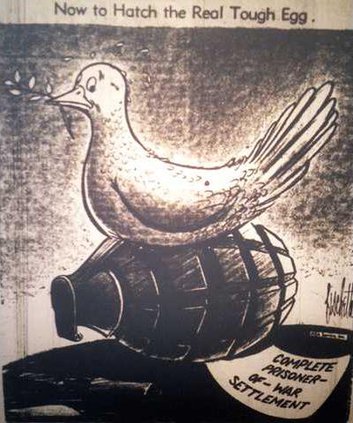DeleteEach week we’ll take a step back into the history of Great Bend through the eyes of reporters past. We’ll reacquaint you with what went into creating the Great Bend of today, and do our best to update you on what “the rest of the story” turned out to be.This week in 1953, readers of the Great Bend Tribune were learning daily of the atrocities Prisoners of War in North Korea had faced as the North Koreans began to release these men as part of the prisoner exchange negotiations towards the end of the Korean War. One story by United Press staff correspondent Rutherford Poats, told of Liberated American soldiers who had witnessed American prisoners of war “pushed off a cliff and left there to die” while on a Korean death march, as well as stories of Chinese guards deliberately bayoneting prisoners at a prison camp.
Out of the Morgue
Returning POWs, new building, dikes at the bottoms in 2013





